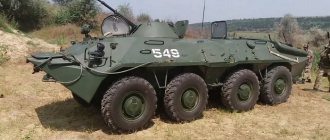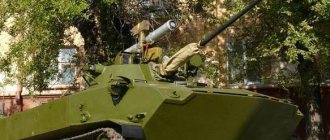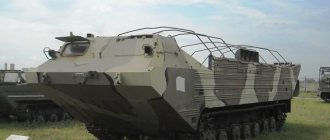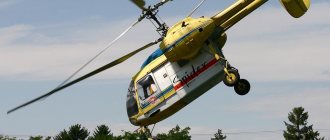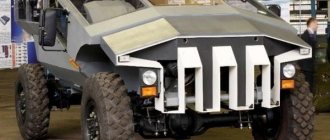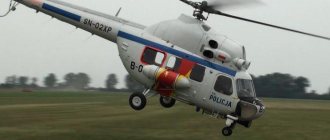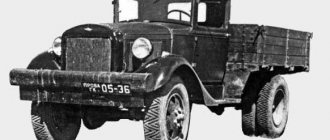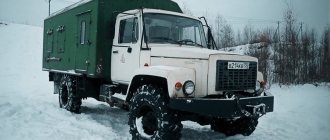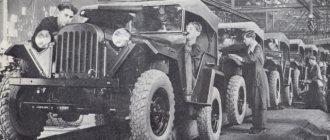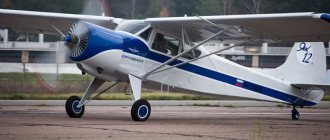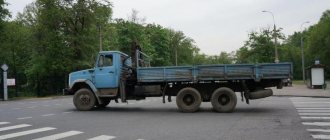Today, one of the most common types of military equipment in all armies of the world are armored personnel carriers. But this was not always the case. Their rapid development began after the end of World War II. The military realized how important it was to increase infantry mobility and increase its security.
In the USSR in 1949, the BTR-40 was adopted, which was an almost exact copy of the American Scout Car M3A1 armored personnel carrier, supplied under Lend-Lease. Then in 1950 the BTR-152 was released, and in 1959 the Soviet amphibious armored personnel carrier BTR-60 was adopted. It had two gasoline engines with two transmissions, and this car was not particularly reliable. And its firepower did not suit the military. In 1976, the BTR-70 was created, the armament of which was strengthened. It was equipped with a KPVT machine gun (14.5 mm) and a PKT machine gun. This vehicle differed favorably from its predecessor; it also had two gasoline engines, but much more powerful than those on the BTR-60.
However, then the war in Afghanistan began and all the shortcomings of the BTR-70 immediately made themselves felt. Its main problem was the power plant, which was complex, not very reliable and consumed a large amount of fuel. It can be said that the BTR-70 was generally poorly suited to operations in mountainous areas. Even the machine gun mounted on it had a small elevation angle and could do little to help the fighters against the dushmans entrenched in the mountains.
It was very inconvenient to parachute from the vehicle, and its security left much to be desired. The Gorky Automobile Plant is beginning to develop a new armored personnel carrier, which will soon be called the BTR-80.
History of creation
The fighting in the democratic republic of Afghanistan revealed many shortcomings of the BTR-70. One of the main ones was the unreliable power system, two carburetor engines, paired and located in the rear of the armored personnel carrier.
In addition to the traditional disadvantages of gasoline engines in the army, gluttony was added even by army standards. Combat operations in the highlands also showed problems with power loss. The hatches on the body of the armored personnel carrier caused problems; it was difficult for the crew and motorized riflemen inside; it was difficult to quickly leave the vehicle.
Fire support on the battlefield was also scant. Combat experience has shown that the elevation angle of armored personnel carrier weapons is insufficient for firing in the mountains. The armor protection of the “seventy” was also insufficient. The water-jet system did not operate effectively; when crossing water bodies, it became clogged with silt, peat and algae.
The design group of the Gorky Automobile Plant, under the command of I. Mukhin and E. Murashkin, was tasked with modernizing the car in accordance with the requirements of the military.
The modernization turned out to be so deep that we can talk about a fundamentally new armored personnel carrier of domestic design.
The twin engine was replaced with one powerful one, KamAZ-740.3, a diesel engine with a turbocharger. The body was increased in comparison with the BTR-70 by 115 mm in height and length, by 100 mm in width. However, due to the reduction in ground clearance, the overall height of the car increased by only 30 mm.
The hull armor was strengthened; all changes led to an increase in the weight of the vehicle by 18%. If the BTR-70 weighed 11.5 tons, then the “eighty” recovered to 13.6 tons. After testing at testing grounds, in 1986 the new armored personnel carrier was officially put into service.
Movement on water
The amphibious vehicle is easily distinguished by its upturned nose, similar to that of the BTR-80. The photo above shows the process of disembarking from the ship. A second car is floating in the background, and the first has already reached the shore. Operation of the BTR-80 when crossing a water obstacle is simple. The design includes one water jet with an axial pump located in the aft part. Movement on the water is controlled using the steering wheel. In addition to the two front axles, which move on land, water rudders and a damper help turn on water. An armored personnel carrier is a heavy vehicle, and it wouldn’t be possible without power steering.
Initially, the BTR-80 was conceived without a water cannon, but the naval command needed a vehicle capable of landing from ships and adapted to the needs of the Marine Corps. Marine units - from assault troops to command communications - all sit on the BTR-80.
Design of the BTR-80
The layout of the machine consists of three parts. At the head there is a control compartment with a crew of a driver and commander. They are positioned like this: on the left is the Mech-Water, on the right is the commander. The middle part is occupied by the gunner-operator and seven landing personnel.
By the way, ten to twelve people can fit “on the armor.”
The troops inside the vehicle are seated along the central axis, facing the sides for the most effective observation and shooting from personal weapons.
The landing force fires through embrasures with ball mounts. They are designed for firing angles from ±15 to ±25° from the central axis of the vehicle. The turret is controlled by a gunner operator, whose combat position is located in the suspended seat of the turret with circular rotation.
The commander of a motorized rifle squad sits in a separate seat immediately behind the driver and commander, and fires from an embrasure in the direction of the vehicle’s movement. Dead zones for landing are the rear hemisphere and the front left part, behind the driver.
The engine in this armored personnel carrier is located in the tail section. The designers placed several small access hatches on the hull to allow quick access to the components and mechanisms of the power plant and transmission.
The vehicle's armor is bulletproof and poorly differentiated. The hull is assembled from rolled steel sheets, joined by welding, the armor thickness is 5-9 mm. The body is streamlined for better passage of water obstacles, the sheets are installed at different angles of inclination to increase protection during shelling.
The middle frontal sheet is covered with a special shield-wave reflector.
In the raised position, it protects the driver's sight glass from being overwhelmed by waves when moving afloat.
New, wide two-piece doors to the troop compartment were installed. The upper half folds to the side and is fixed with a spring delay; the lower half, in the open position, forms a step, a kind of ramp, and facilitates landing from a moving vehicle.
The vehicle's armament is paired: a large-caliber (14.5 mm) KPVT machine gun and a 7.62 mm PKT. The weapon is placed in a small armored turret for all-round firing, the installation is trunnion-mounted, the elevation angle ranges from −4 to +60°.
The weapon unit is aimed and the turret is rotated manually. Aiming is provided by the 1PZ-2 periscope sight. Monocular optics allows you to cover a KPVT target at a distance of up to 2000 m, PKT up to 1500 m. The ammunition stowage includes 500 cartridges in boxes for KPVT and 2000 for PKT.
Surveillance is carried out through periscopes. The driver has three TNPO-115 periscopes. For operations at night, the use of infrared headlights and an optical device is assumed.
Visibility through observation devices at night, depending on conditions, varies from 60 to 120 meters.
The commander's visibility is provided by a combined type TKN-3 viewing device; for use at night, an OU-3GA2M searchlight with an infrared filter is installed on the vehicle body, which ensures operation in active mode and a visibility range of up to 400 meters.
The operator-gunner is provided with all-round surveillance: front and rear viewing periscopes of the TNP type and a sight. Six additional technical equipment are additionally installed in the troop compartment to provide paratroopers with visibility.
Communication is provided by R-123 radio stations on early series of vehicles, later they were replaced by more advanced R-173. In addition, during the modernization, simplex radio stations R-163 were installed on some of the vehicles. Internal communication is provided by R-124, designed for three subscribers.
Performance characteristics of the BTR-90 and analogues
Let's compare the main parameters of the Rostok, which replaced it with the BTR-82, the fairly popular Finnish Patria armored personnel carrier, and the M1126 Stryker used by the US troops.
| BTR-90 | BTR-82 | Patria AMV | M1126 ICV | |
| Weight, tons | 22 | 15,4 | Up to 27 | 18,5 |
| Length, meters | 8,2 | 7,6 | 7,7 | 7,2 |
| Engine power, hp | 510 | 300 | 543 | 350 |
| Armament | 30mm cannon, 30mm grenade launcher, 7.62mm machine gun, Konkurs ATGM | 300 14.5mm machine gun, 7.62mm machine gun | Depending on the configuration | 12.7mm machine gun or 40mm grenade launcher. |
| Crew (landing force), people | 3 (+7) | 3 (+7) | 3 (+8) | 2 (+9) |
| Maximum speed, km/h | 100 | 100 | 100 | 101 |
| Cruising range, km | 800 | 600 | 600-850 | 500 |
It must be remembered that the modular design of the Finnish armored personnel carrier can be equipped with a wide variety of weapons options. As a rule, these are 30mm automatic cannons, but there are versions with 105mm guns and even twin 120mm mortars. In terms of weight and dimensions, the BTR-90 came close to the Patria, and if the development of heavily armed models had been completed, it would have become its worthy competitor.
But the BTR-82 is much closer to the American vehicle, and even surpasses it in firepower - the simple open turret of the Stryker has no stabilization.
Modernization and comparison with foreign analogues
Over its many years of service, the BTR-80 has been modernized several times. The following types of vehicles are found in the Russian army:
- a command and staff vehicle, additionally equipped with radio communications and terrain positioning equipment; in addition, part of the BTR-80K was released as mobile missile launch control posts;
- BTR-80A, a modernized version with an uninhabited combat module with a 30 mm 2A72 cannon. Instead of a turret with a pair of machine guns;
- BTR-80M, with a reinforced YaMZ-238 engine, as well as tires with increased bullet resistance and a longer hull;
- BTR-80AM, YaMZ-238 engine and uninhabited combat module.
In addition to Russia, these transporters are in service in 26 countries around the world. Not only Russians like to improve, so there are options that are adjusted even to NATO standards. Hungarian developers have achieved the greatest success in this field:
- BTR-80 SKJ – specialized medical vehicle;
- BTR-80 VSF - for RCBZ troops;
- BTR-80 MVJ – a tow truck for equipment damaged on the battlefield with the possibility of simple repairs on site;
- BTR-80 MPAEJ – device for repair and maintenance;
- BTR-80 MPFJ – engineering and technical modification.
In addition to Hungary, a lot of work was done on the “eighty” in Poland and Ukraine. The attention with which engineers treat this vehicle speaks of its enormous potential for modernization and importance in military affairs.
The use of the BTR-80 in Afghanistan and other conflicts did not greatly interest the American military, accustomed to tracked transporters. The situation was changed by the famous Throw on Pristina, which showed the advantage of wheeled vehicles over tracked vehicles in such operations.
As a result, the US Army received the M1126 Stryker, which is based on the Swiss “Piranha” armored personnel carrier and our “eighty”. Comparative tests, meanwhile, showed that Americans have serious problems. Due to the heavy weight of the vehicle and the features of the transmission, the Stryker is more likely to get stuck in the mud.
If a mine tears off a couple of wheels on a domestic armored personnel carrier, it is quite capable of getting to its own.
The American, despite having the same 8 wheels, gets up after losing at least one of them.
In which troops is it used?
The scope of application of armored personnel carriers is quite wide. If we talk about the BTR-80, the technical characteristics allow this vehicle to be used in a wide variety of troops. It is mainly used by motorized riflemen. In any textbook on tactics you can find schemes for conducting combat in various situations with a motorized rifle platoon and three armored personnel carriers.
High speed and maneuverability make the BTR-80 an ideal vehicle for airborne units. The ability to cross water obstacles and the ability to be transported on landing ships allow it to be used in Marine Corps operations. Eight-wheeled vehicles easily slide down ramps straight into the water, within a few minutes, under the cover of artillery, they reach the shore and begin the assault on land, while under the armor “black berets” are waiting in the wings.
It is also possible to drop equipment from aircraft; after landing, the armored personnel carrier immediately enters into battle. Modern parachute systems allow tanks and armored personnel carriers to be dropped simultaneously with their crew, with minimal risk to people.
In addition to Russia, the BTR-80 is actively used in the CIS countries, Estonia, Turkey, etc.
Combat use of the BTR-80
From the moment the first vehicles entered service with the troops, they immediately occupied their rightful niche. Not a single military clash that has occurred since 1986 on the territory under the jurisdiction of the USSR, Russia and allied countries has occurred without at least the indirect participation of the BTR-80.
The armored personnel carrier, the workhorse of any conflict, ensured the fast and relatively safe delivery of manpower to the scene of a collision. She also supported the infantry with the fire of her machine guns, and, if necessary, evacuated wounded soldiers.
An indicative case of the competent use of the qualities of the BTR-80 can be seen in the events of August 1996.
In Grozny, units of internal troops were blocked on Minutka Square. There was no possibility of evacuating seriously wounded soldiers. One of the officers, Major Larin, decided to make his way with the wounded on an armored personnel carrier.
Having accelerated, Larin and his crew make their way through the first ring of encirclement, but it was necessary to drive through the entire city. The commander orders false smoke to be lit on the turret of the armored personnel carrier before the next barrier of militants. At the same time, the vehicle is attacked from several sides by grenade launchers.
One of the grenades, having torn off the boxes attached to reinforce the armor on board, explodes near the hull without damaging the engine. The commander orders the driver to slow down without turning off the engine and slowly stop the car. At the same time, smoke bombs flare up, and the complete impression of the vehicle being hit is created.
According to Larin’s recollections, the militants rose to their full height, expecting stunned and burned soldiers to climb through the hatches. Instead, the crew turns the KPVT towards the attackers. A burst from a machine gun is accompanied by an order to pick up speed again. This trick made it possible to escape from the encirclement and deliver the wounded to the hospital.
In other wars, skillful hands and a clear head made it possible to use the maneuverability and power of armored personnel carriers with all efficiency.
Appearance
Many combat vehicles have approximately the same appearance as the BTR-80. The photo below is presented for better understanding of the information. The body is made of armored steel, welded rigidly and reliably. The main elements are the bow, stern, sides, roof and bottom. The transport vehicle has a whole collection of hatches: for the winch in the bow, there are also inspection hatches, for the air gun, driver and commander hatches, the fighting compartment and a hatch above the power plant. There is also a wave-reflective shield in front.
The turret is made in the form of a truncated cone and has embrasures for installing coaxial machine guns. Welded from armored steel.
Trace in culture
The BTR-80, one of the most popular vehicles of recent decades, has made a huge contribution to cinema and video. Everything that is, in one way or another, related to combat operations will definitely be shown by the BTR-80 sooner or later. Thanks to its characteristic silhouette, it is impossible to confuse this car.
It’s interesting that you can see the device not only in movies, but also in numerous videos of music performers.
With a high degree of probability, if they want to depict “something military” in their creations, then the hard worker BTR-80 will appear there. Often these cars are used in small towns on Victory Day.
If you really want to, you can not only fly into space, but also build an BTR-80 yourself and put it on a shelf at home. Russian, as well as Chinese “Trumpeter” and Italian “ITALERY” and many others are producing prefabricated models of the BTR-80.
The products are in great demand in China. Our eastern neighbors, passionate about the reconstruction of the Soviet and Russian armies in the Afghan and Chechen wars, are no less interested in this technology than the Russians.
Places of military glory
Since 1976, the main armored personnel carrier in the Soviet Union has been the BTR-70 - a good vehicle, but it inherited the shortcomings of its predecessor - the BTR-60PB. It had high fuel consumption, an insufficiently thought-out landing and landing system, and an unreliable power plant. In the early 80s, the design bureau of the Gorky Automobile Plant designed a new armored personnel carrier - the BTR-80, the characteristics of which allow it to be used in a wide variety of conditions. The new technology has earned its fame through hard work, having traveled the roads of all military conflicts of the USSR and the CIS since the late 1980s: Moldova, Tajikistan, Chechnya, Nagorno-Karabakh, etc.
The BTR-80 was used as the main vehicle in the wars in the North Caucasus. The troops were transported directly on the roof of the transport vehicle. In the event of a military clash on the way, the soldiers jumped off and took cover behind the armored sides.
For foreigners, the Russian soldier is associated not only with the Kalashnikov assault rifle, but also with the BTR-80. Technical characteristics allow the equipment to be effectively used in anti-terrorist operations. This is the most popular wheeled vehicle in the Russian army; modifications based on the BTR-80 are used by assault units, communications units, artillery, and also as a mobile first aid post.
Tank version of the Vladimirov heavy machine gun
The initiative to create powerful small arms capable of being mounted on vehicles came from a chain of historical events. USSR military assistance to the Vietnamese people, fighting one-on-one with the American army, included the supply of all types of small arms. The Vietnamese army and Viet Cong units were in dire need of anti-aircraft weapons capable of fighting low-flying enemy aircraft and helicopters. As a result, an anti-aircraft gun based on the Vladimirov machine gun was born. A by-product of the development was a tank version of the heavy machine gun.
The Vladimirov tank heavy machine gun or KPVT received the index of the Main Rocket and Artillery Directorate 56-P-562T. This modification was designed for installation on armored vehicles, including tanks, armored personnel carriers and other self-propelled vehicles. This weapon could be used for the following purposes:
- automatic fire at air, ground and surface targets;
- automatic fire to provide fire support for infantry and motorized units;
- automatic fire at lightly armored targets (armored personnel carriers, armored vehicles, infantry fighting vehicles);
- automatic fire at closed and equipped firing points, at concentrations of enemy infantry and vehicles.
As a means of defense, the heavy machine gun provided stability to long-term and equipped positions. In the absence of powerful fire weapons, the KPVT could act as a strike weapon. In addition to army units, Vladimirov’s product has found wide application in other areas of weapons. The weapons were in service with units of internal troops and border units. The machine gun was also actively used in the navy. They were equipped with small ships that performed patrol and security functions.
As a rule, the machine gun was equipped with a PP-61A periscope sight or a PU optical sight. Anti-aircraft versions of the weapon were equipped with VK-4 and VK-4M collimator sights. The weapon could fire armor-piercing, armor-piercing incendiary and tracer bullets. The main method of firing is short bursts of 2-5 shots. Long bursts, up to 20 shots, are used extremely rarely and mainly to combat low-flying air targets.
On modern armored vehicles, which have a completely enclosed armored body, the machine gun was installed in a rotating turret, along with a 7.62 mm PKT machine gun.
The main operators of the PKVT were Soviet armored personnel carriers and other lightly armored vehicles. In irregular units, during armed conflicts abroad and in the post-Soviet space, Vladimirov machine guns were often installed in the back of cars and trucks.
The machine gun became the main weapon of fire for the BTR-60, 70 and BTR-80 armored personnel carriers. Of the other lightly armored vehicles, the KPVT was installed on the BRM-1 and BRDM-2.
The Soviet tanks IS-7, T-10 and the North Korean tank Songun-915 became perhaps the only vehicles of this class on which such powerful machine guns were installed.
